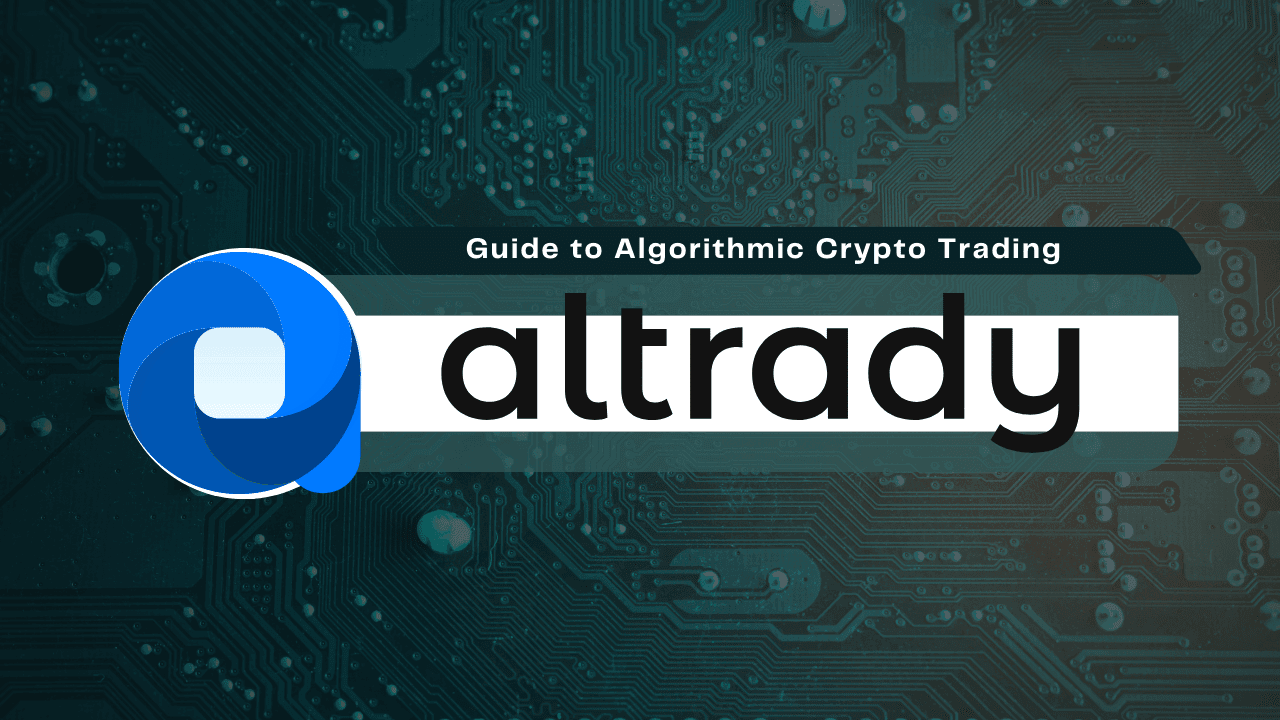Black Friday is loading…
Get 40% off with Altrady’s yearly plan and take the lead.
.svg)
.svg)
.svg)
.svg)
.svg)
.svg)
.svg)
.svg)
.svg)
.svg)
.svg)
.svg)
.svg)

Algorithmic trading is a popular method of trading in the crypto market, where a computer program or software automatically executes trades based on a set of predefined rules and conditions.
Algorithmic trading has become increasingly popular in recent years due to its ability to execute trades quickly and efficiently, minimizing human error and emotions in the trading process.
In this guide, we will take a closer look at algorithmic crypto trading, its advantages and disadvantages, and how you can get started with algorithmic trading in the crypto market.
Is a user-friendly and powerful algorithmic trading platform that offers various tools and features to traders. The platform provides a Base Scanner tool that uses the QFL signal to help traders identify profitable trades. With this tool, traders can easily spot important coin price movements and receive alerts when a coin price drops to its targeted percentage level. Altrady offers a wide range of trading bots that can automate your trading strategies and help you make better trading decisions.
Is another popular algorithmic trading platform allowing users to create and customize their trading bots. The platform supports multiple exchanges and offers various trading strategies, including grid trading, DCA, and smart orders. 3commas provides a user-friendly interface and various tools to help traders manage their portfolios and track their performance.
Is an all-in-one cryptocurrency portfolio management platform that offers various features to traders, including automated trading, rebalancing, and backtesting. The platform supports multiple exchanges and provides users with a comprehensive dashboard to track their portfolio performance. Additionally, Shrimpy offers a wide range of trading strategies and allows users to customize their own trading bots.
Quadency is a professional-grade algorithmic trading platform that offers various features and tools to traders. The platform supports multiple exchanges and offers different trading strategies, including market-making, arbitrage, and trend following. Additionally, Quadency provides users with a comprehensive dashboard to track their performance and manage their portfolios. The platform also offers a user-friendly interface, allowing users to create and customize trading bots.
When choosing an algorithmic trading platform, it's essential to consider each platform's features, tools, and strategies. By evaluating these factors, traders can select the platform that best suits their trading needs and preferences.
Speed and Efficiency: One of the biggest advantages of algorithmic trading is the ability to execute trades quickly and efficiently, which can be critical in the fast-paced world of crypto trading. Algorithms can monitor the market 24/7 and react to market changes in real-time, allowing traders to capitalize on opportunities as they arise.
Removes Emotions: Algorithmic trading removes emotions from the trading process, which can be a significant advantage over human traders who may let their emotions influence their decisions. Algorithms are programmed to follow predefined rules and conditions, which means they will execute trades based solely on data and analysis rather than emotions.
Backtesting and Optimization: Algorithmic trading allows traders to backtest their strategies on historical data and optimize their trading parameters for maximum profitability. This means traders can refine their strategy to improve performance and reduce risk.
Diversification: Algorithmic trading allows traders to diversify their portfolios by executing trades across multiple markets and cryptocurrencies simultaneously. This can help to spread risk and increase returns over time.
Complexity: Algorithmic trading can be complex, and traders may need a good understanding of programming and coding languages to develop and implement their trading strategies effectively.
Technical Issues: Algorithmic trading relies on technology and software, which means there is always a risk of technical issues or malfunctions that can lead to unexpected losses.
High Barrier to Entry: Algorithmic trading can be expensive, with traders needing to invest in hardware, software, and data feeds to develop and implement their strategies effectively.
Choose a Platform: Many algorithmic trading platforms are available in the market, and choosing a platform that suits your needs and trading goals is vital. Some popular platforms include Altrady, QuantConnect, AlgoTrader, and TradingView.
Develop a Strategy: Traders must develop a strategy that suits their trading goals and risk tolerance. This can involve analyzing market data and developing a set of rules and conditions that the algorithm will follow when executing trades.
Backtesting and Optimization: Once a strategy has been developed, traders should backtest it on historical data to ensure its effectiveness. Optimization can be done to refine the strategy's parameters further.
Deploy and Monitor: After testing and optimizing, traders can deploy their algorithmic trading strategy in the live market. Monitoring the strategy's performance regularly and making adjustments as necessary is essential.
Algorithmic trading can effectively trade in the crypto market, providing speed, efficiency and removing emotions from the trading process. However, it is crucial to understand the risks and complexities involved and to develop a solid trading strategy before deploying it in the live market. Following the steps outlined above, traders can get started with algorithmic crypto trading and improve their trading performance over time.